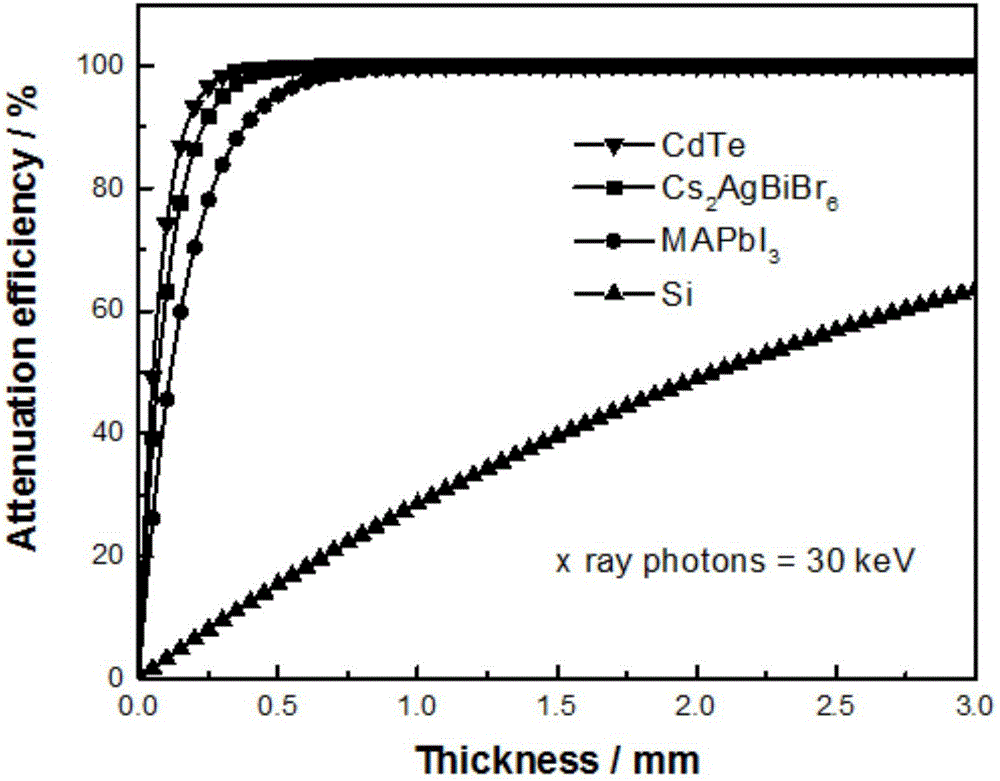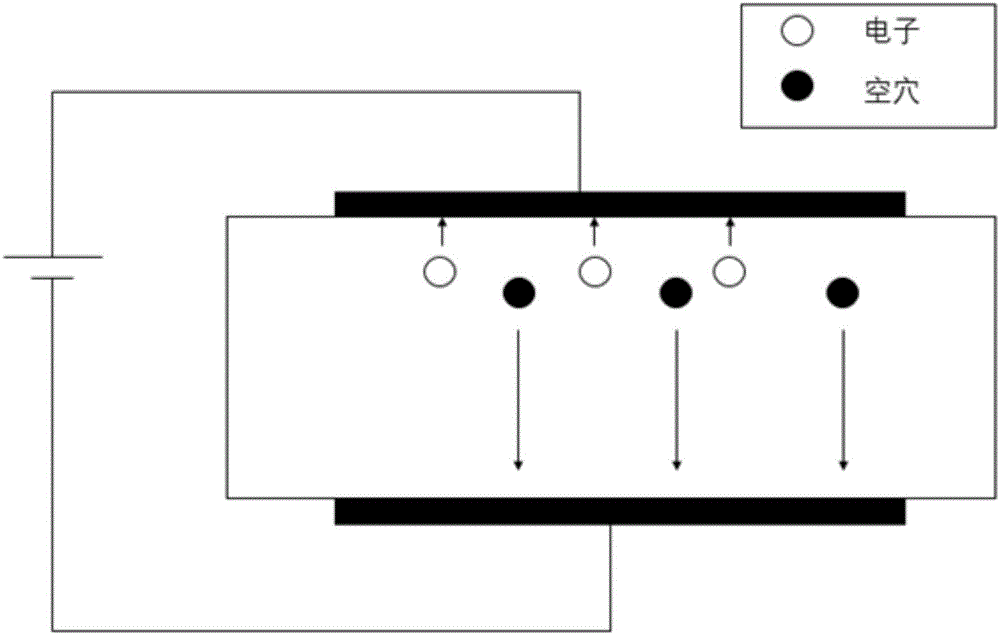Semiconductor radiation detector based on Bi-based quaternary halide single crystal, and manufacturing method thereof
A technology of radiation detectors and semiconductors, applied in semiconductor devices, electrical components, circuits, etc., can solve problems such as poor stability, environmental pollution, and low sensitivity
- Summary
- Abstract
- Description
- Claims
- Application Information
AI Technical Summary
Problems solved by technology
Method used
Image
Examples
Embodiment example 1
[0036] This example will introduce cesium silver bismuth bromide (Cs 2 AgBr 6 ) preparation of the crystal and the preparation of the semiconductor radiation detector with the crystal:
[0037] Take silver bromide (AgBr, 0.188g, 1mmol), bismuth bromide (BiBr 3 , 0.449g, 1mmol) and cesium bromide (CsBr, 0.426g, 2mmol) were added to 10ml of hydrobromic acid (HBr) solution, the solution was heated to 130°C to fully dissolve the solution, and then 1°C / h The speed is lowered to 60 ° C, and crystals are precipitated, thereby obtaining cesium silver bismuth bromide (Cs 2 AgBr 6 ) crystals.
[0038] A gold electrode with a thickness of 80 nm was evaporated on the upper and lower surfaces of the crystal by thermal evaporation.
Embodiment example 2
[0040] This example will introduce cesium silver bismuth bromide (Cs 2 AgBr 6 ) crystal, and add charge selective contact layer on this crystal to prepare semiconductor radiation detector:
[0041] Take silver bromide (AgBr, 0.188g, 1mmol), bismuth bromide (BiBr 3 , 0.449g, 1mmol) and cesium bromide (CsBr, 0.426g, 2mmol) were added to 10ml of hydrobromic acid (HBr) solution, the solution was heated to 130°C to fully dissolve the solution, and then 1°C / h The speed is lowered to 60 ° C, and crystals are precipitated, thereby obtaining cesium silver bismuth bromide (Cs 2 AgBr 6 ) crystals.
[0042] On the upper surface of the crystal, carbon sixty (C 60 ).
[0043] A gold electrode with a thickness of 80 nm was evaporated on the upper and lower surfaces of the crystal by thermal evaporation.
Embodiment example 3
[0045] This example will introduce cesium silver bismuth chloride (Cs 2 AgBiCl 6 ) preparation of the crystal and the preparation of the semiconductor radiation detector with the crystal:
[0046] Take silver chloride (AgCl, 0.144g, 1mmol), bismuth chloride (BiBr 3 , 0.317g, 1mmol) and cesium chloride (CsCl, 0.382g, 2mmol) were added to 10ml of hydrochloric acid (HCl) solution, the solution was heated to 120°C to fully dissolve the solution, and then at a rate of 0.5°C / h The temperature is lowered to 60°C, and crystals are precipitated to obtain cesium silver bismuth chloride (Cs 2 AgBiCl 6 ) crystals.
[0047] A gold electrode with a thickness of 80 nm was evaporated on the upper and lower surfaces of the crystal by thermal evaporation.
[0048] It can be seen from the examples that the semiconductor radiation detector prepared by the present invention has the advantages of high sensitivity, stability, and environmental friendliness.
PUM
 Login to View More
Login to View More Abstract
Description
Claims
Application Information
 Login to View More
Login to View More - R&D
- Intellectual Property
- Life Sciences
- Materials
- Tech Scout
- Unparalleled Data Quality
- Higher Quality Content
- 60% Fewer Hallucinations
Browse by: Latest US Patents, China's latest patents, Technical Efficacy Thesaurus, Application Domain, Technology Topic, Popular Technical Reports.
© 2025 PatSnap. All rights reserved.Legal|Privacy policy|Modern Slavery Act Transparency Statement|Sitemap|About US| Contact US: help@patsnap.com



